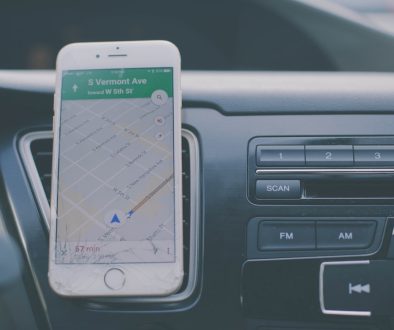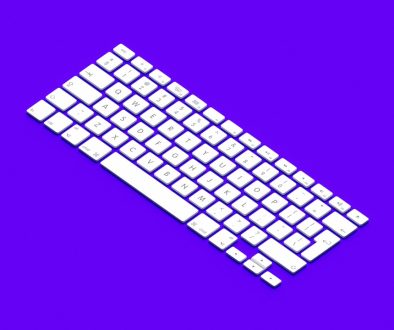MacBook Screen Goes Black but Still Running: Causes and Solutions
Few things are more frustrating than relying on your MacBook for work or personal tasks, only to have the screen suddenly go black—even as the device continues to run. This situation is not only perplexing but often alarming, especially if you don’t know what’s causing it. Understanding the reasons behind a black screen on a MacBook that is still operational can help you take the right steps toward fixing it or preventing it from happening again.
Understanding the Problem
A MacBook screen going black while the laptop remains powered on can manifest in different ways. For some users, it happens during boot-up; for others, it may occur while they’re in the middle of working. Oftentimes, the keyboard lights remain on, you might hear the fan spinning, and you can even hear system sounds—yet the screen remains stubbornly dark.
This is a clear indication that the issue isn’t with the entire system, but rather isolated to the display functionality. There are various technical, software, and hardware-related reasons that could trigger this.

Common Causes of a MacBook Black Screen
1. Software or System Glitches
The macOS software environment is sophisticated but not immune to bugs. Temporary system crashes, incomplete updates, or corrupted files can cause the screen to turn black.
2. Display Brightness Settings
It might sound simple, but it’s always worth checking if the screen brightness is accidentally turned all the way down. There have been instances where users unknowingly reduced brightness using keyboard shortcuts or through system settings.
3. External Display Conflicts
If you’re using an external monitor or have previously used one, macOS might still be trying to project the display onto a non-existent second screen. This can cause the internal monitor to remain blank.
4. Power Issues and Battery Glitches
MacBooks with power delivery issues or malfunctioning batteries might cause display problems. Even though the system appears to run, insufficient power could prevent the screen from lighting up.
5. Faulty Sleep or Wake Functionality
Sometimes the MacBook doesn’t properly wake from its sleep state. This can be due to firmware bugs or hardware that’s not syncing correctly during wake-up operations.
6. PRAM, SMC, or NVRAM Problems
The Parameter RAM (PRAM), System Management Controller (SMC), and Non-Volatile RAM (NVRAM) manage essential hardware functions. Corrupt settings in these components can interfere with how your display boots and behaves.
7. Logic Board or GPU Failure
On a more serious note, a failing logic board or graphics processor can prevent your display from working. This issue typically shows other signs, such as flickering, artifacts, or unusual noises before a complete black screen.
Solutions to Try
Before you panic or rush to the nearest Apple Store, there are several troubleshooting steps you can try to determine the root cause and potentially resolve the issue yourself.
1. Perform a Forced Restart
A forced restart might help if a temporary software glitch is causing the screen to go black.
- Hold down the Power button for about 10 seconds until the MacBook powers off.
- Wait a few seconds and press the Power button again to restart.
2. Reset the SMC
The System Management Controller governs power and display behavior. Resetting it can help address issues related to sleep, wake, and screen illumination.
To reset SMC on MacBooks with the T2 chip:
- Shut down your MacBook completely.
- Press and hold Control + Option + Shift (right side) for 7 seconds.
- Then press and hold the Power button as well.
- Hold all keys for another 7 seconds, then release.
- Wait a few seconds, then power on the MacBook.
3. Try Connecting to an External Display
Using an external monitor can help determine whether the issue lies with the MacBook’s internal screen or the system itself.
- Connect your MacBook to an external display using the appropriate cable (Thunderbolt, HDMI, USB-C).
- If the external display works, you’re likely dealing with a faulty MacBook screen or ribbon cable.
4. Boot in Safe Mode
Safe Mode can help diagnose software-related issues. It loads minimal macOS resources and drivers, allowing you to see if third-party software or extensions are the culprit.
- Shut down your MacBook.
- Hold down the Shift key as you power it back on.
- Release the Shift key when the login window appears.

5. Reset NVRAM/PRAM
This is another effective way to reset the display and system configuration settings.
- Shut down your MacBook.
- Turn it on and immediately press and hold Option + Command + P + R.
- Hold the keys for about 20 seconds, then release them.
6. Adjust Brightness and Keyboard Backlight
If your screen is black but the keyboard lights are on, use the F1 and F2 keys to adjust screen brightness. Also try toggling keyboard backlight to confirm your Mac is responsive.
7. Reinstall macOS
As a last resort, a fresh installation of macOS can rectify deeply embedded software problems. Make sure to back up your data first.
- Boot into macOS Recovery Mode by powering on your Mac and holding Command + R.
- Select Reinstall macOS from the utilities window and follow the prompts.
When to Seek Professional Help
If you’ve exhausted the above steps and the screen remains black, it’s time to consider professional diagnosis. Problems with internal components such as the display cable, motherboard, or GPU should be handled by certified technicians.
AppleCare or Apple-authorized service providers will have the tools and expertise to run deeper diagnostics. Attempting to open or repair modern MacBooks yourself can void warranties and risk further damage.
Preventative Measures
After resolving the issue, taking the right steps can help prevent it from happening again:
- Keep macOS Updated: Software updates often patch critical bugs that could cause black screens.
- Use Quality Accessories: Cheap or incompatible adapters and hubs can short-circuit the display system.
- Monitor Your Battery Health: Use apps or built-in diagnostics to ensure battery performance is within normal limits.
- Avoid Frequent Forced Shutdowns: These can corrupt system files and lead to display issues.
Regular maintenance, including disk checks and permissions repair (especially in older macOS versions), also contributes to overall system health.
Conclusion
The issue of a MacBook screen going black while still running is unsettling, but it is often fixable. Whether the solution lies in simple resets or professional repairs, identifying the cause is the first and most important step. By staying informed and proactive, you can reduce the chances of running into this problem in the future and ensure that your MacBook remains a reliable part of your digital lifestyle.
- Understanding Mercari Selling Fees in 2025: A Full Guide - October 23, 2025
- BMW S1000RR HP4 tech overview - October 23, 2025
- How to Stop Google Chrome Helper from Using Too Much CPU - October 23, 2025
Where Should We Send
Your WordPress Deals & Discounts?
Subscribe to Our Newsletter and Get Your First Deal Delivered Instant to Your Email Inbox.



